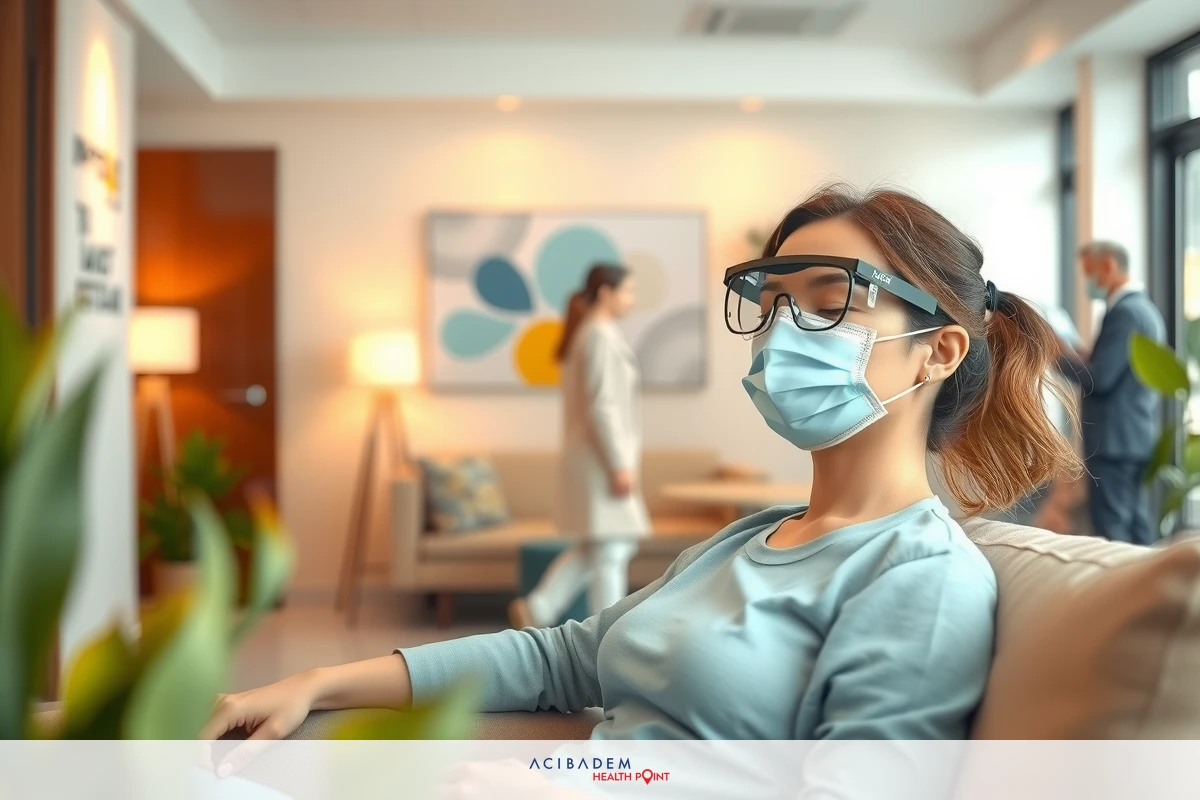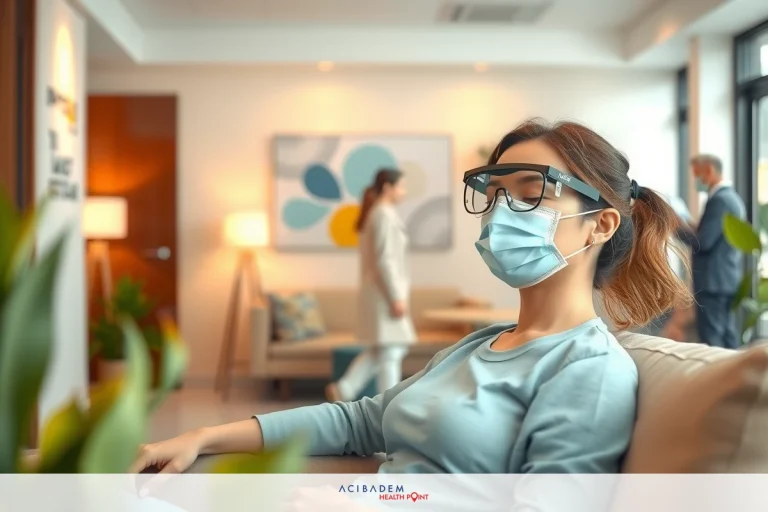When Are Eyes Fully Healed After LASIK
When Are Eyes Fully Healed After LASIK LASIK surgery has the power to enhance vision. Post-procedure healing time is a common concern for many patients. The journey towards complete recovery varies with each individual and their unique physical response.
The immediate aftermath of the operation witnesses certain expected symptoms such as blurry vision and discomfort in the eyes. Gradually, within a short span of days or weeks, these initial side effects subside. An improvement in visual acuity becomes noticeable.
Yet, it’s crucial to remember that full recovery extends beyond this phase – often referred to as long-term healing. This stage signifies visual stability, which might take several months for some individuals. It is during this period that one can truly gauge the success of their LASIK surgery.
Immediate Post-Op Period
The first chapter in the post-LASIK surgery recovery story unfolds immediately after the operation, an epoch often termed as the immediate post-op period. Patients commonly experience a range of symptoms including blurred vision, discomfort or minor pain in the eyes. These symptoms are part and parcel of LASIK recovery, signalling that your body has begun its healing journey.
These initial effects generally last for about four to five hours; this is when most patients report their vision starts to clear up gradually. It’s also not uncommon for some people to notice dramatic improvements in their sight within just 24 hours following their procedure. Please note that it may vary from person to person based on individual factors such as age, overall health condition and specific attributes of one’s eyes.
During this time frame, patients should expect some level of sensitivity towards light along with experiencing halos around lights at night-time. The eyes might produce excessive tears or feel unusually dry – both extremes are normal responses during this stage of recovery from LASIK surgery.
Moving into the next few days after LASIK surgery involves careful management and adhering strictly to guidelines provided by your eye care specialist. This includes using prescribed antibiotic drops and nurturing a protective approach towards your newly operated eyes by avoiding strenuous activities and potential irritants like dust and wind.
As you progress through the immediate post-operative period following LASIK surgery, expect rapid changes in visual clarity and comfort. Understanding this timeframe helps manage expectations for your return to daily activities and supports efficient recovery.
The immediate post-op period is marked by swift changes in vision and eye comfort. It’s a dynamic phase that sets the stage for subsequent healing stages. Being informed about what to expect can ensure patients navigate this time with confidence and ease, making it a vital component of their LASIK recovery journey.
Initial Healing Phase
The initial healing phase bridges the gap between immediate post-operative symptoms and long-term recovery. This is a critical juncture in the journey where your eyes are hard at work, mending from the inside out after LASIK surgery. The days and weeks following this procedure are filled with changes that are both subtle and noticeable.
You may feel as if there’s a foreign object in your eye – an itch or irritation which must not be rubbed or scratched under any circumstances. This sensation fades away naturally within 3-4 days; patience becomes
an imperative virtue during this time. Protecting one’s eyes against possible infection by diligently applying

prescribed antibiotic drops also contributes to effective healing.
During these first few weeks of recovery, it’s important for patients to avoid activities that could potentially harm their still sensitive eyes such as swimming pools due to chlorine exposure or engaging in contact sports without protective eyewear. Your vision might fluctuate slightly during this period but rest assured it’s just part of the healing process post LASIK surgery.
As we progress into weeks two through four post-surgery, most patients report substantial improvements in terms of clarity and stability in their vision compared to before undergoing LASIK surgery. Their doctors also begin tapering off certain medications during this period while continuing others relevant for ongoing protection against infections until full recovery is achieved.
The initial healing phase is a time of transition from immediate post-operative symptoms towards noticeable improvements in vision. This period demands both patience and adherence to preventive measures against potential complications. With each passing day during this timeframe, you are one step closer to achieving your goal of fully healed eyes after undergoing LASIK surgery.
Long-Term Healing
The journey towards complete recovery from LASIK surgery continues well into the long-term healing phase. This is a critical period where patients experience the fruits of their patience, finally achieving stable vision after undergoing this transformative procedure.
Moving beyond the initial few weeks post-surgery, one enters a stage that can extend over several months. During these months, your eyes are still refining and perfecting their visual acuity – it’s as if they’re fine tuning themselves to offer you clear sight. As time progresses, instances of glare sensitivity or dryness reduce significantly.
While doctors may have ceased most medications by now, it’s essential for patients to continue protecting their eyes against potential harm or irritation during this period. Certain activities like rubbing one’s eyes vigorously should be strictly avoided even at this stage due to possible risk of flap dislocation which could necessitate further treatment.
Continuous follow-up with your ophthalmologist is also crucial during this timeframe since any arising concerns can be addressed promptly without delay. Minor adjustments in lifestyle such as wearing sunglasses outdoors for protection against UV rays will greatly aid in ensuring smooth sailing throughout the long-term healing process post LASIK surgery.
By three to six months following LASIK surgery, most people attain visual stability – an important milestone marking successful recovery from the operation. It’s around this time that many report reaching a state where they no longer need corrective lenses or glasses, realizing the true benefit of having chosen to undergo LASIK treatment.
The long-term healing phase is the key to achieving the best results after LASIK surgery. It involves a gradual improvement in vision and a reduction in initial side effects. This phase is vital for determining the overall success of LASIK treatment and understanding the recovery process. When Are Eyes Fully Healed After LASIK
When Are Eyes Fully Healed After LASIK: Frequently Asked Questions
How long does it usually take for eyes to fully heal after LASIK surgery?
The healing timeline varies with each individual. Most people notice significant improvements within the first 24 hours post-operation, while others might require a few days or weeks to experience these changes. Complete visual stability, marking full recovery, typically occurs between three and six months following LASIK surgery. However in some cases, it may extend up to one year.
What can I expect during the immediate post-operative period?
In this phase immediately following LASIK surgery, you may experience symptoms such as blurry vision and discomfort in your eyes which are normal and expected parts of the healing process. These initial effects generally last for about four to five hours before vision starts clearing up gradually.
What care measures should I follow during the initial healing phase?
During this crucial timeframe extending over several weeks post-surgery, it's important to avoid activities that could potentially harm your eyes like swimming or contact sports without protective eyewear. Regularly using prescribed antibiotic drops and adhering strictly to guidelines provided by your eye care specialist will greatly aid in effective recovery.
Are there any specific precautions I need adhere to during the long-term healing phase?
Yes! Even though most medications would have been ceased by now, you should continue protecting your eyes against potential harm or irritation - avoid rubbing them vigorously due risk of flap dislocation which could necessitate further treatment. Continuous follow-up visits with your ophthalmologist remain imperative till complete recovery is achieved.








